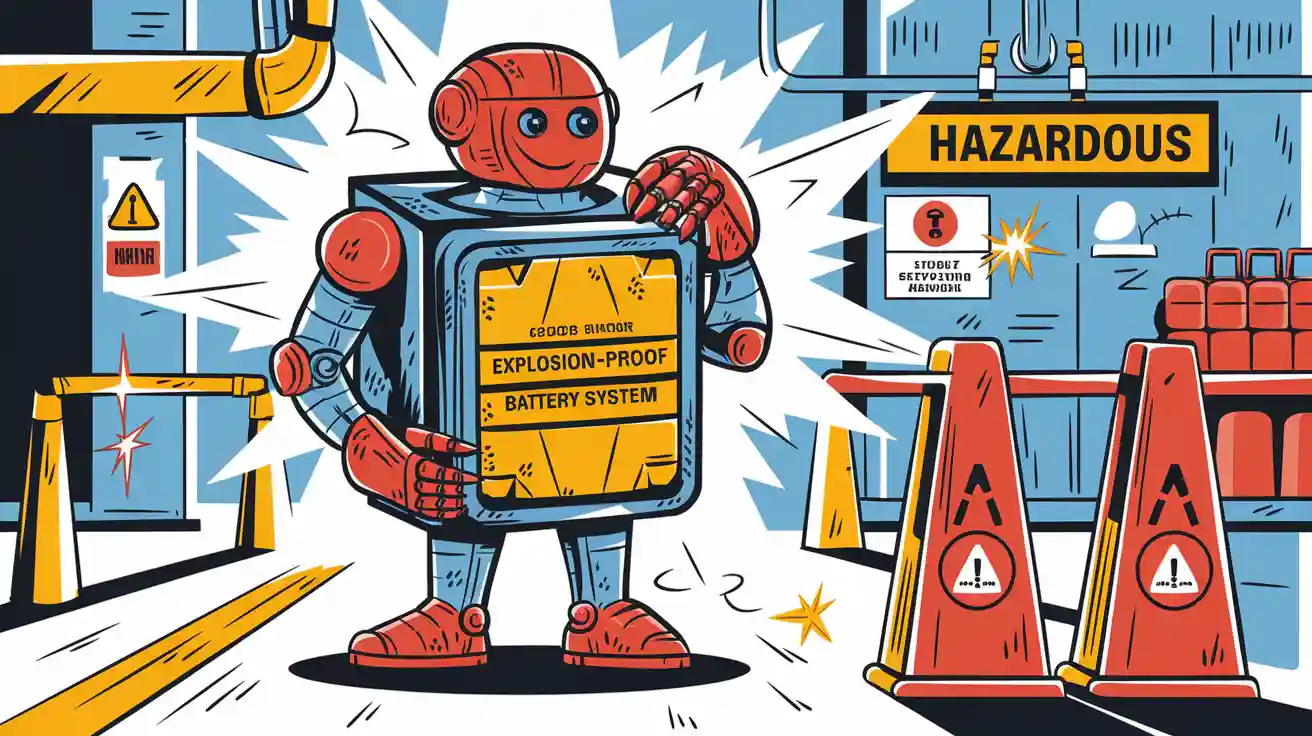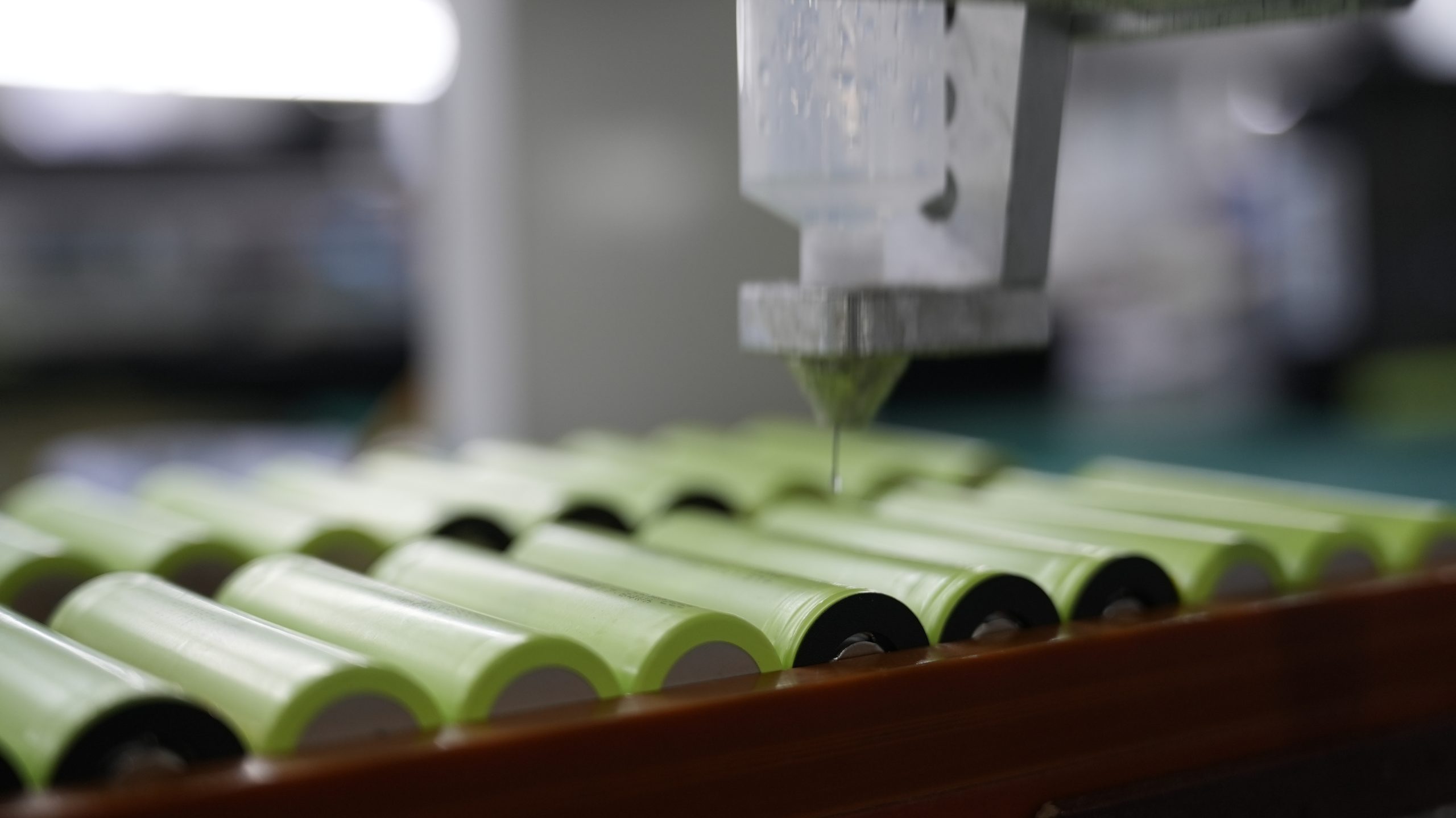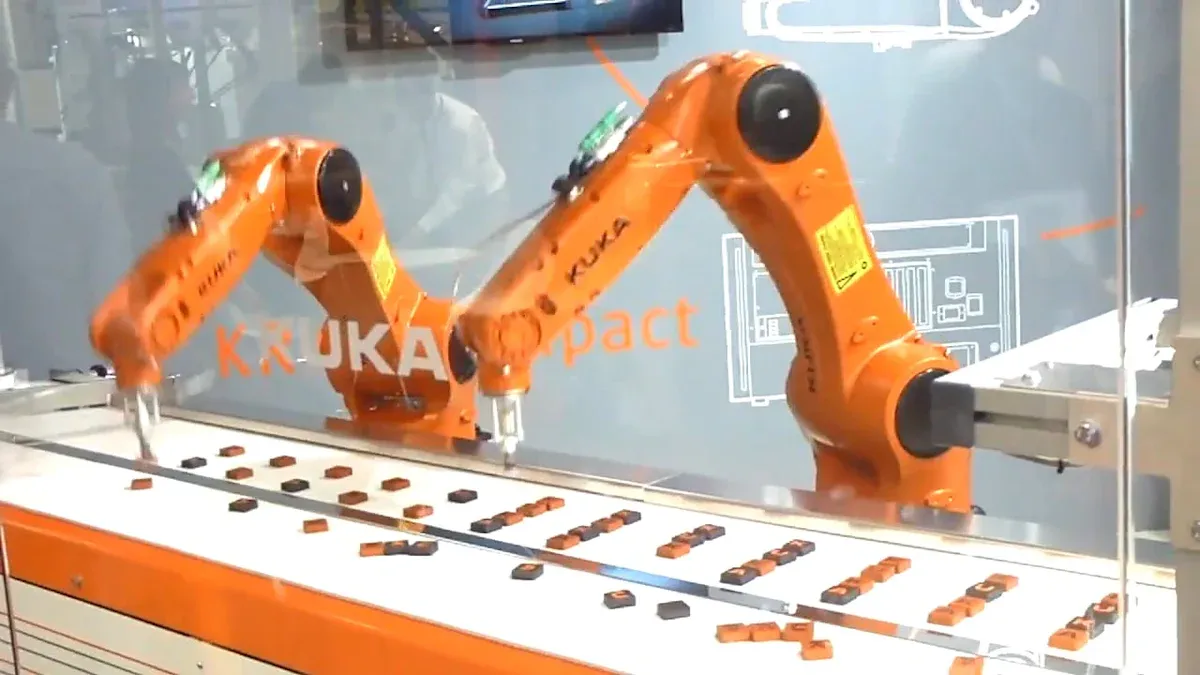
Explosion-proof battery systems give you confidence when deploying humanoid robots in hazardous environments. Advanced lithium-ion technology and robust protection features help you achieve higher safety standards. You experience improved human-robot interaction, reducing workplace incidents and supporting autonomous operations.
Key Takeaways
Explosion-proof battery systems enhance safety for humanoid robots in hazardous environments, reducing risks of overheating and explosions.
Recent advancements in lithium-ion technology provide longer operation times and improved thermal management, making robots more reliable in extreme conditions.
Autonomous robots equipped with advanced battery management systems minimize human exposure to dangerous environments, increasing operational efficiency and safety.
Part 1: Explosion-Proof Battery Systems

1.1 Key Features
You rely on explosion-proof battery systems to protect your robotic platforms in hazardous environments. These systems offer advanced features that set them apart from standard battery packs. The table below highlights the most critical safety features:
Safety Feature | Description |
|---|---|
Overcharging and Over-discharging | Smart charging circuits and voltage monitoring prevent excessive heat and capacity loss. |
Short Circuit Prevention | Protective circuit modules and fuses stop overheating and explosions. |
Structural Integrity | Shock-resistant enclosures and vibration-dampening materials guard against mechanical stress. |
Fire and Explosion Prevention | Fire-retardant materials and automated suppression mechanisms reduce fire risks. |
Real-time diagnostics and automated cutoffs ensure safe operation. |
Note: Explosion-proof battery systems must comply with certifications such as ATEX, IECEx, and UL to meet global industrial standards.
1.2 Lithium-Ion Advancements
You benefit from recent advancements in lithium-ion battery technology, which have transformed explosion-proof battery systems for robotics. Modern lithium-ion batteries deliver higher energy density, faster charging, and longer cycle life. The table below compares key performance metrics:
Metric | Description |
|---|---|
Energy Density | Higher energy density supports longer robot operation in hazardous zones. |
Cycle Life | Extended cycle life reduces downtime and replacement costs. |
Safety Features | Enhanced BMS and thermal management minimize fire and explosion risks. |
Regulatory Compliance | Meets ATEX, IECEx, and other global standards for hazardous environments. |
You also see improvements in thermal management and the use of safer materials, which further reduce operational risks.
1.3 Role in Robotic Systems
Explosion-proof battery systems integrate seamlessly into humanoid robots. You gain multiple layers of protection, including crashworthy designs and positive-pressure valves. These valves manage internal pressure during thermal events, releasing gas safely and cutting off current to prevent explosions. This integration ensures your robots can operate reliably near humans and sensitive equipment, even in the most demanding industrial settings.
Part 2: Challenges in Hazardous Environments
2.1 Safety Risks
You encounter a range of safety risks when deploying robotic systems in hazardous environments. Mining, oil and gas, and industrial sectors present unique threats to autonomous mobile robots and multi-application robots. Toxic gases, dust exposure, and cave-ins challenge the reliability of robotic systems. Automated drills and loaders help you mitigate these risks by operating without human presence near unstable ground. Driverless trucks have reduced accident rates and increased reliability in production environments.
Non-explosion-proof battery systems can fail in critical ways. The Moss Landing facility incident demonstrates how detection and heat suppression systems failed, resulting in a battery meltdown. This event highlights the importance of robust safety measures in battery energy storage systems. FEMA case studies reveal that thermal runaway and potential explosions remain major concerns, emphasizing the need for improved safety protocols in robotic systems.
Explosion-proof battery designs address common failure modes such as thermal runaway and gas accumulation. NFPA 68 deflagration venting and NFPA 69 exhaust ventilation help maintain structural integrity and keep gas concentrations below flammable limits. The rapid increase in energy density of lithium-ion cells complicates the management of flammable gas release during failure events. You must consider these factors when selecting battery packs for multi-functional robotic systems in hazardous environments.
Tip: Always verify that your robotic systems meet ATEX, IECEx, and UL certifications for safety in hazardous environments.
2.2 Autonomous Operation
You rely on autonomous mobile robots and autonomous systems to reduce human exposure to dangerous environments. These robotic systems operate in toxic and unsafe conditions, minimizing the need for human workers in high-risk areas. Autonomous robots withstand extreme temperatures and function in explosion-prone zones, protecting your workforce from hazardous environments.
The oil industry increasingly utilizes autonomous robots to monitor hazardous areas, safeguarding workers from toxic gases and high-risk conditions. Autonomous systems in mining operate continuously, reducing the risk of human error and improving reliability. Driverless trucks and multi-application robots enhance operational efficiency and safety by performing tasks without direct human intervention.
Battery Management Systems (BMS) play a crucial role in supporting autonomy and safety. Advanced BMS provide real-time diagnostics, automated cutoffs, and thermal management, ensuring your robotic systems remain operational in challenging environments. Learn more about BMS.
Application Scenario | Autonomous System Benefit | Safety Enhancement |
|---|---|---|
Mining | Driverless trucks, loaders | Reduced human exposure |
Oil & Gas | Remote monitoring robots | Protection from toxic gases |
Industrial | Automated inspection robots | Minimized accident rates |
Security | Surveillance robots | Continuous monitoring |
Infrastructure | Maintenance robots | Lower risk of human injury |
Consumer Electronics | Automated delivery robots | Safe operation in public spaces |
Medical | Disinfection robots | Reduced infection risk |
2.3 Human-Robot Interaction
You must prioritize safe human-robot interaction in energetic environments. Robotic systems equipped with sensors and vision systems detect human presence, allowing real-time adjustments to avoid accidents. Collaborative robots (Cobots) feature force limiters to prevent injury during interaction. Advanced software solutions monitor robot operations and enforce safety protocols, reducing the risk of accidents in hazardous environments.
Multi-application robots and multi-functional robotic systems use artificial intelligence to adapt to changing conditions and ensure safe collaboration with human workers. You benefit from improved safety and operational efficiency when deploying autonomous mobile robots in industrial, security, and infrastructure applications. Artificial intelligence enables robotic systems to learn from their environment and optimize performance, supporting autonomy and safety.
Note: Regular training and clear communication protocols enhance the effectiveness of human-robot interaction in hazardous environments.
Part 3: Applications & Future Trends

3.1 Industry Use Cases
You see explosion-proof lithium battery packs powering robots across a wide range of sectors. In medical environments, disinfection robots deliver high-touch surface disinfection and sanitization in hospitals, reducing infection risks. The robotics industry deploys fully autonomous floor-scrubbing robots and cleaning robots in industrial plants, where cleaning and disinfection are critical for safety and compliance. Security teams use robotic solutions for surveillance and hazardous area inspection, leveraging autonomous navigation capabilities to minimize human exposure. Infrastructure maintenance benefits from robotic floor cleaners and multi-purpose robotic platforms that handle cleaning and disinfection in public spaces. Consumer electronics companies introduce cleaning robots for home and office environments, while industrial sectors rely on explosion-proof inspection robots for asset integrity management.
Industry | Application | Features |
|---|---|---|
Power Generation | Explosion-proof inspection robot | Certified for ZONE 1, remote operation, advanced manipulation, reduces personnel needs |
Medical | Disinfection robot | High-touch surface disinfection, autonomous navigation, supports infection control |
Industrial | Cleaning robot, inspection robot | Cleaning, disinfection, asset management, explosion-proof lithium battery packs |
Security | Surveillance robot | Hazardous area monitoring, autonomous navigation, enhances safety |
Infrastructure | Robotic floor cleaners | Cleaning, disinfection, maintenance in public spaces |
Consumer Electronics | Cleaning robot | Automated cleaning, disinfection module, safe for public and private environments |
You can deploy these robotic solutions to address cleaning, disinfection, and inspection challenges in hazardous environments.
3.2 Operational Benefits
You gain significant operational benefits by integrating explosion-proof lithium battery packs into your robotic solutions. Explosion-proof wheeled inspection robots operate in areas unsafe for humans, enhancing safety and reducing downtime. In the petrochemical and pharmaceutical sectors, you meet strict safety regulations and minimize operational interruptions. Advanced sensor technologies and autonomous navigation capabilities transform robots into essential tools for asset management, reducing risks from human error. Collaborative inspection fleets dynamically adjust tasks based on real-time risk assessments, improving both safety and efficiency.
You should consider the cost implications. High capital expenditures result from the upfront investment in certified explosion-proof systems. Compliance with ATEX, IECEx, and UL standards increases development and procurement costs. Specialized design and certification processes can raise capital expenditures by 40–70% compared to non-explosion-proof systems. Integration may require facility downtime and specialized engineering expertise, especially during retrofits.
3.3 Future of Explosion-Proof Battery Systems
“A team of battery experts has identified the cause of deterioration in water-based energy storage. Their breakthrough with iron-chromium redox flow batteries could offer enormous capacity and explosion-proof safety, using water instead of volatile chemicals.”
You will see emerging battery technologies reshape the future of robotic solutions in hazardous environments.
New chemistries, such as solid-state and sodium batteries, promise higher energy density and longer operational times.
Robots will deliver quick energy bursts for tasks like lifting and navigating debris.
Disinfection robots will become more effective, supporting cleaning and sanitization in disaster recovery and healthcare.
Multi-purpose robotic platforms will adapt to new cleaning and disinfection demands, improving workplace safety.
You can expect lithium battery packs to remain central to cleaning, disinfection, and inspection robots. As technology advances, you will deploy robotic solutions with greater autonomy, reliability, and safety.
Explosion-proof lithium battery packs help you improve safety, reliability, and human-robot interaction in hazardous environments. You gain operational advantages, such as reduced downtime and compliance with strict regulations. Looking ahead, you will see:
Faster charging and discharging cycles
Advanced thermal management for harsh conditions
AI-driven battery management systems
Growing demand in robotics, medical, and industrial sectors
FAQ
What makes lithium battery packs from Large Power suitable for robots in hazardous environments?
You choose Large Power lithium battery packs for robots because they deliver reliable performance in hazardous environments. These packs meet strict safety standards. Request a custom battery consultation.
How does AI improve robot safety in hazardous environments?
AI enables your robot to detect risks in hazardous environments. You use AI to optimize robot navigation, monitor lithium battery packs, and ensure safe operation in all environments.
Which sectors benefit most from explosion-proof lithium battery packs for robots?
You see robots with lithium battery packs excel in environments like medical, robotics, security, infrastructure, consumer electronics, and industrial sectors. The table below compares their application scenarios:
Sector | Robot Application | Environments | AI Role |
|---|---|---|---|
Medical | Disinfection robot | Clean environments | AI-driven navigation |
Robotics | Inspection robot | Hazardous environments | AI-based diagnostics |
Security | Surveillance robot | Risk environments | AI threat detection |
Infrastructure | Maintenance robot | Public environments | AI task scheduling |
Consumer Electronics | Cleaning robot | Home environments | AI cleaning patterns |
Industrial | Inspection robot | Explosive environments | AI safety monitoring |
For more details on lithium battery packs for robots in hazardous environments, contact Large Power.




